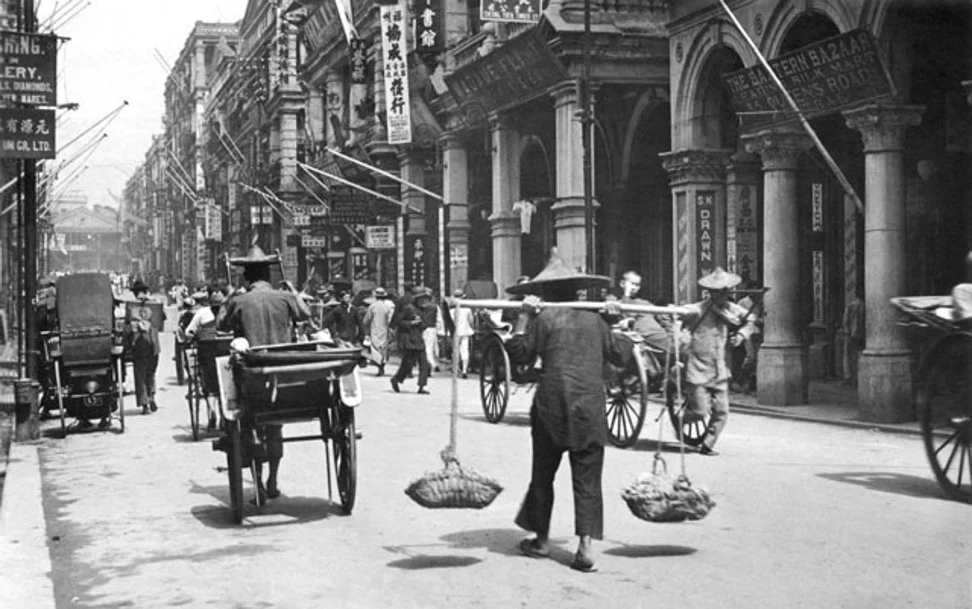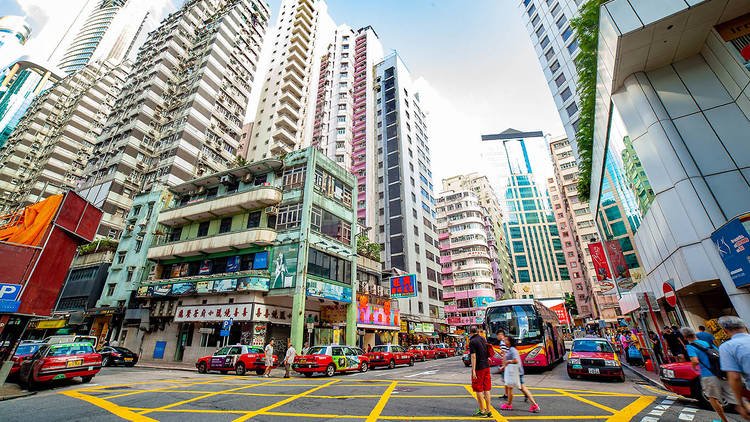Hong Kong Then and Now
Hong Kong Then
Hong Kong, recognized as the world’s third-ranked global financial center after New York City and London, holds a significant position in international trade, being the ninth-largest exporter and eighth-largest importer.
The territory’s name, first romanized as “He-Ong-Kong” in 1780, initially referred to a small inlet situated between Aberdeen Island and the southern coast of Hong Kong Island.
This inlet became a crucial point of contact between British sailors and local fishermen, marking the beginning of Hong Kong’s transformation into a bustling port city.
By 1810, the simplified name “Hong Kong” gained popularity, reflecting the region’s growing prominence.
Today, Hong Kong’s strategic location and dynamic economy continue to attract global business and investment, solidifying its status as a vital hub in the Asia-Pacific region.

Hong Kong History
Hong Kong’s history stretches back tens of thousands of years, with the earliest known human traces dating from the Paleolithic period, around 35,000 to 39,000 years ago.
Archaeological investigations, particularly those conducted in Wong Tei Tung, Sai Kung, have uncovered ancient knapped stone tools, indicating that the area was inhabited long before recorded history.
By the Middle Neolithic period, approximately 6,000 years ago, human settlement had expanded significantly, with early inhabitants believed to be Austronesians and later the Yue people.
Archaeological findings in Sha Ha suggest that rice cultivation began in the region during the Late Neolithic period, highlighting the agricultural advancements of these early societies.
Related Article: Dubai Then and Now
The transition from the Neolithic to the Bronze Age saw the development of pottery, jewelry, and small bronze implements, reflecting a growing complexity in cultural and technological practices.
The integration of Hong Kong into China began during the Qin dynasty in 214 BCE when the region was incorporated after the conquest of the indigenous Baiyue people.
Over the centuries, the area experienced various shifts in control and population dynamics, notably during the Mongol conquest of the 13th century when the Southern Song court briefly established its presence in Kowloon.
Following the Yuan dynasty, migration from neighboring provinces increased, leading to the establishment of prominent local families.
The first European contact came with the Portuguese explorer Jorge Álvares in 1513, who initiated trade in the region, although significant European involvement would not occur until the British arrived in the 19th century.
Related Article: Singapore Then and Now
The 19th century marked a turning point in Hong Kong’s history, particularly with the onset of the Opium Wars.
In response to the Qing dynasty’s attempts to suppress the opium trade, tensions escalated, culminating in the First Opium War (1839-1842).
The Treaty of Nanking, which concluded the war, ceded Hong Kong Island to the British, setting the stage for its transformation from a sparsely populated fishing village into a bustling colonial port.
The British administration quickly established infrastructure, but initial challenges such as piracy and disease hindered economic growth.
However, the Taiping Rebellion in the 1850s brought an influx of Chinese refugees, including affluent merchants, who contributed to the colony’s economic development.
Related Article: Shanghai Then and Now

Hong Kong’s strategic location and burgeoning trade opportunities attracted foreign investment, leading to significant expansion, particularly after the Second Opium War, which resulted in the cession of the Kowloon Peninsula and Stonecutters Island.
By the late 19th century, the British had secured a 99-year lease of the New Territories, further solidifying their control over the region.
As the 20th century progressed, Hong Kong became an important financial and industrial center, especially during the post-World War II period when it rapidly industrialized and modernized its infrastructure.
The impending handover of Hong Kong to China in 1997 prompted significant public concern over future governance, civil rights, and the rule of law.
Related Article: Tokyo Then and Now
Negotiations between the United Kingdom and China culminated in the Sino-British Joint Declaration, which promised to uphold Hong Kong’s existing systems for 50 years after the handover. The transition was marked by mass emigration as residents feared the implications of Chinese sovereignty.
After the handover, Hong Kong faced various challenges, including economic crises and public health emergencies, yet it remained a vital global financial hub, symbolizing the complexities of its colonial past and its role in the modern world.
The legacy of Hong Kong’s rich history continues to shape its identity and influence its future trajectory.
Related Article: Seoul Then and Now
Hong Kong Now

Hong Kong is a special administrative region (SAR) of the People’s Republic of China, situated on the southern coast of China, adjacent to the Pearl River estuary.
Covering an area of 1,104 square kilometers (426 square miles), it is home to approximately 7.4 million residents, making it the fourth most densely populated region in the world.
The unique demographic composition of Hong Kong includes a diverse mix of nationalities and cultures, resulting from its history as a global trade hub and colonial port.
This multicultural environment contributes to the vibrant social fabric of the region, influencing its culinary traditions, festivals, and everyday life.
Historically, Hong Kong’s strategic location has made it a significant player in international trade. Its deep-water harbor and proximity to major shipping routes facilitated its development into one of the world’s leading financial centers.
Related Article: Bangkok Then and Now
Since its establishment as a British colony in the 19th century, Hong Kong has thrived as a gateway between East and West, attracting business and investment from around the globe.
The region’s economy is characterized by a robust service sector, with finance, trade, and tourism playing pivotal roles.
Despite its relatively small geographic size, Hong Kong’s economic influence extends far beyond its borders, making it a vital node in the global economy.
As a special administrative region, Hong Kong operates under the “one country, two systems” framework, which allows it to maintain a degree of autonomy from mainland China.
This arrangement enables the region to uphold its own legal and economic systems, distinct from those of the People’s Republic of China.
Related Article: Kuala Lumpur Then and Now
However, the political landscape in Hong Kong has faced challenges in recent years, particularly concerning issues of governance, civil liberties, and the preservation of its unique identity.
The region has experienced significant protests and public movements advocating for democratic reforms, reflecting the complex relationship between its residents and the central government in Beijing.
In summary, Hong Kong stands as a dynamic and densely populated region, marked by its rich history, economic prowess, and cultural diversity.
Its status as a special administrative region allows for a blend of local governance and integration with mainland China, although this relationship continues to evolve amid ongoing social and political changes.
Related Article: Mumbai Then and Now
FAQs
Hong Kong is not a country; it is a special administrative region (SAR) of the People’s Republic of China.
Yes, Hong Kong is part of China. It became a special administrative region of China on July 1, 1997, after being handed back from British rule.
It is referred to as “Hong Kong, China” to indicate its status as a part of the People’s Republic of China while also acknowledging its unique administrative and legal system.
Hong Kong is located on the southern coast of China, adjacent to the Pearl River estuary, across from the city of Macau and about 60 kilometers east of Guangzhou.






























